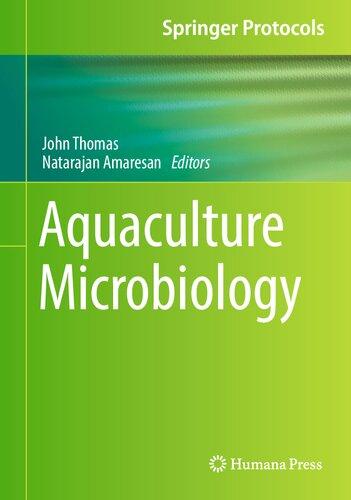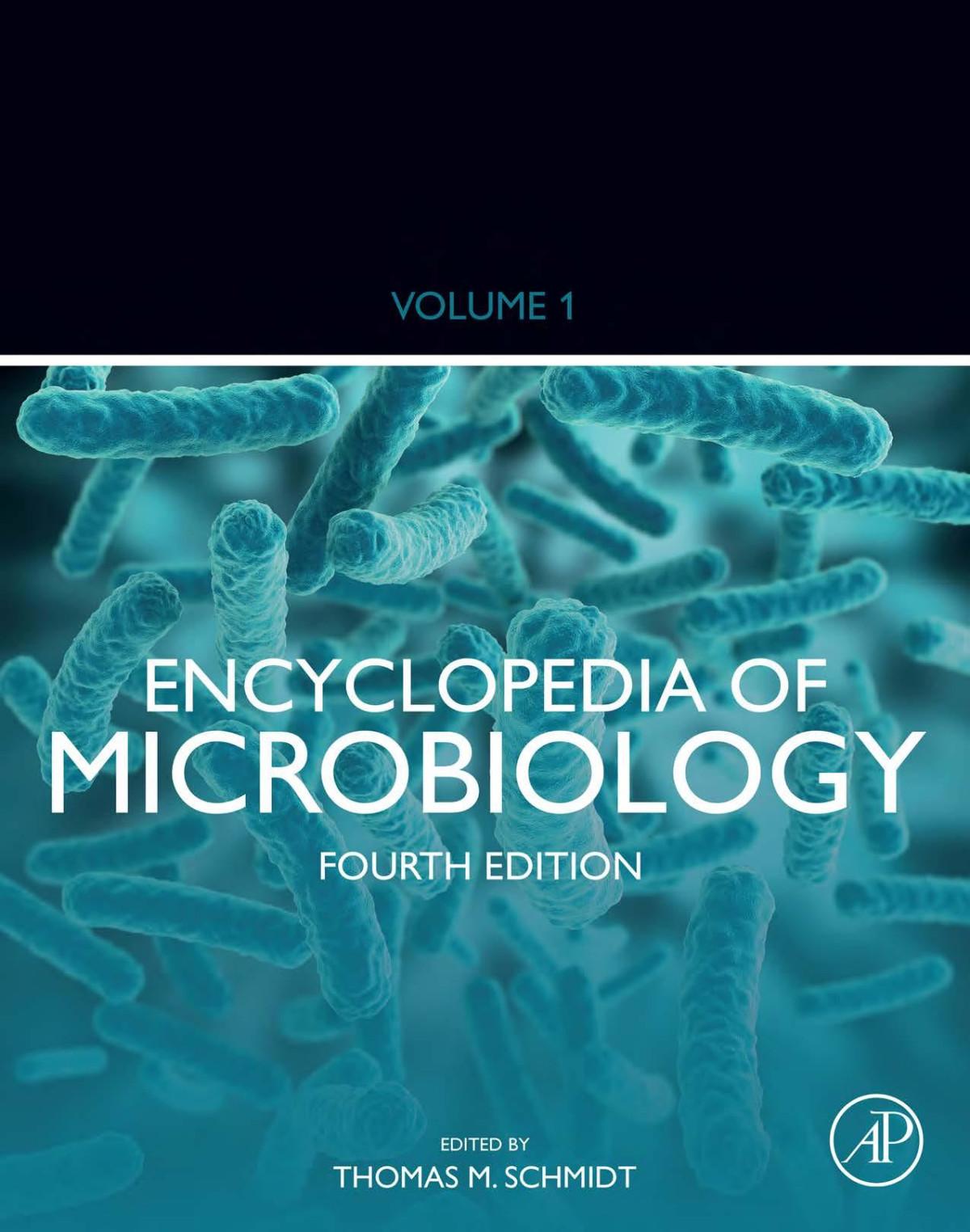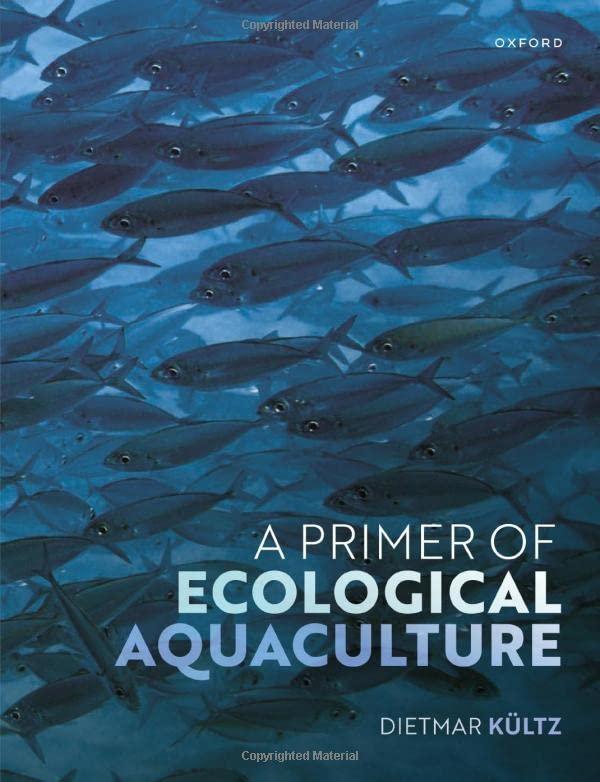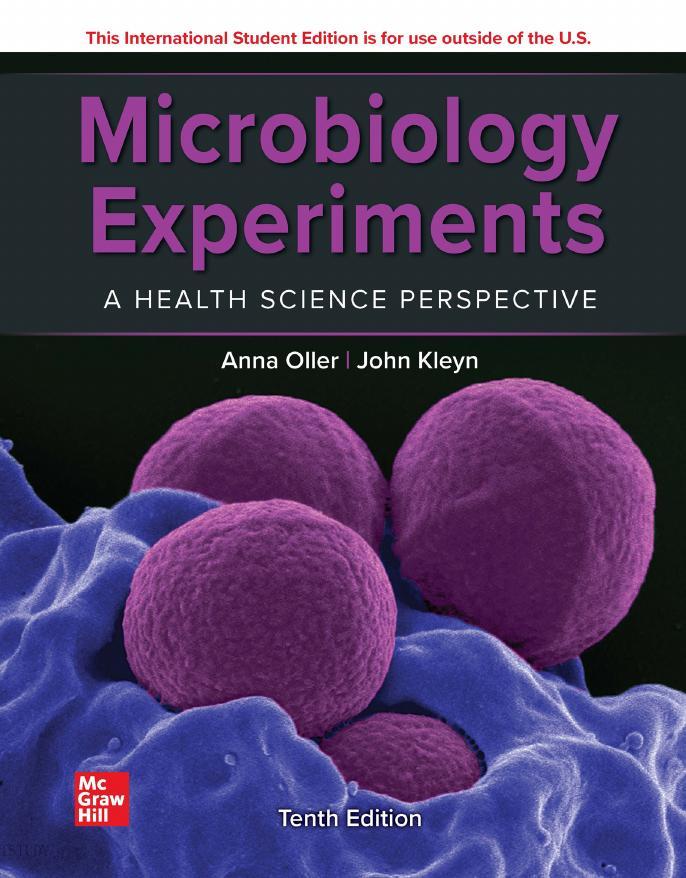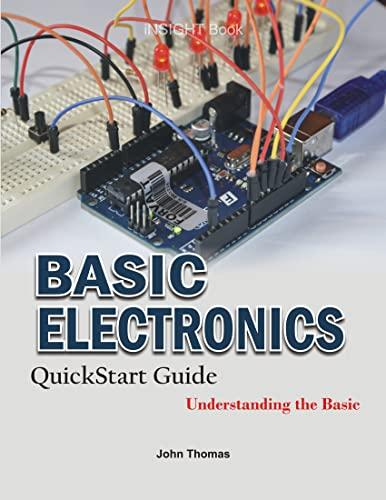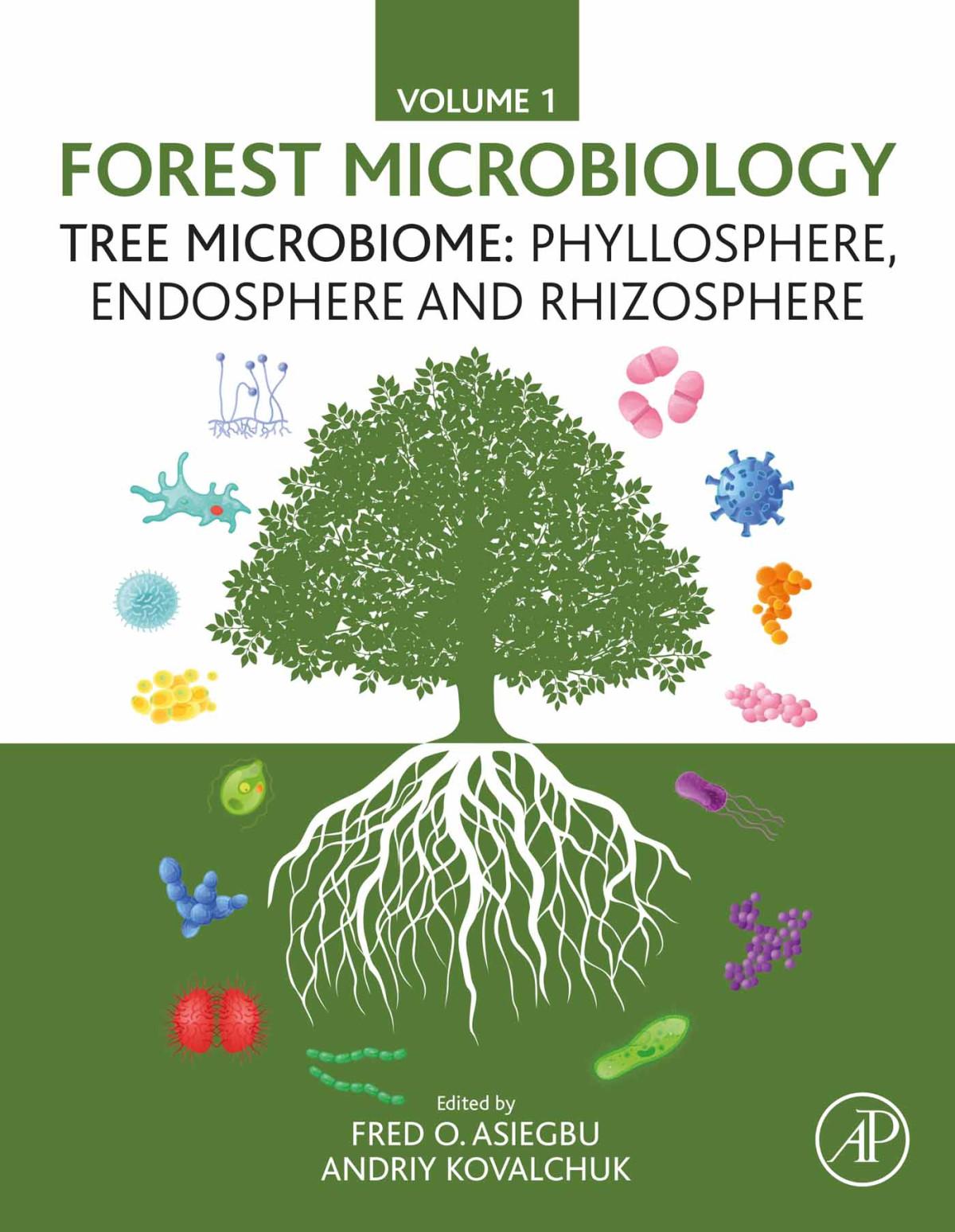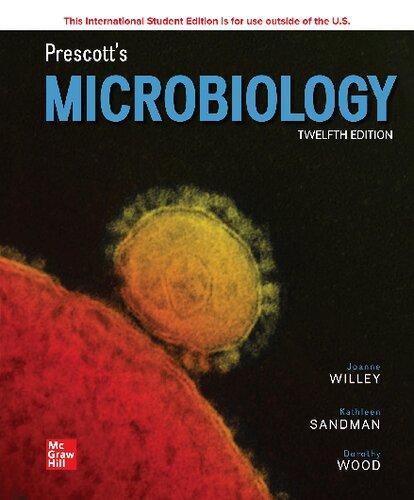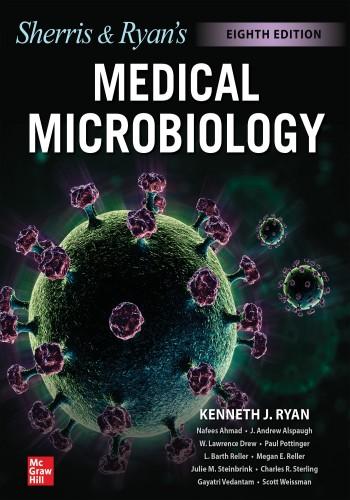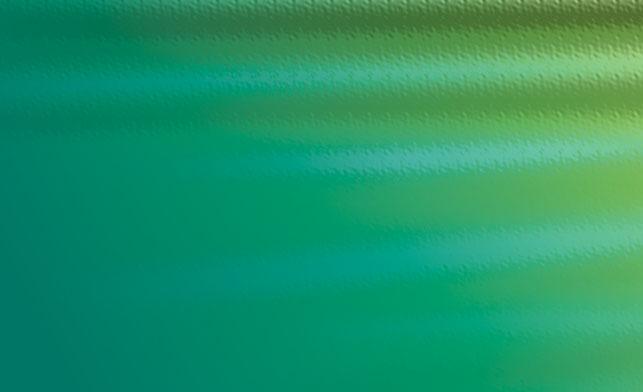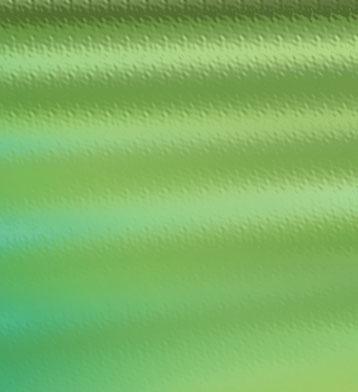AquacultureMicrobiology
Editedby
JohnThomas
CentreforNanobiotechnology,VelloreInstituteofTechnology,Vellore,TamilNadu,India
NatarajanAmaresan
C.G.BhaktaInstituteofBiotechnology,UkaTarsadiaUniversity,Surat,Gujarat,India
Editors JohnThomas CentreforNanobiotechnology VelloreInstituteofTechnology Vellore,TamilNadu,India
NatarajanAmaresan C.G.BhaktaInstituteofBiotechnology UkaTarsadiaUniversity Surat,Gujarat,India
ISSN 1949-2448
Springer Protocols Handbooks
ISSN 1949-2456 (electronic)
ISBN 978-1-0716-3031-0 ISBN 978-1-0716-3032-7 (eBook) https://doi org/10 1007/978-1-0716-3032-7
© The Editor(s) (if applicable) and The Author(s), under exclusive license to Springer Science+Business Media, LLC, par t of Springer Nature 2023
This work is subject to copyright All rights are solely and exclusively licensed by the Publisher, whether the whole or par t of the material is concerned, specifically the rights of translation, reprinting, reuse of illustrations, recitation, broadcasting, reproduction on microfilms or in any other physical way, and transmission or information storage and retrieval, electronic adaptation, computer software, or by similar or dissimilar methodology now known or hereafter developed
The use of general descriptive names, registered names, trademarks, ser vice marks, etc. in this publication does not imply, even in the absence of a specific statement, that such names are exempt from the relevant protective laws and regulations and therefore free for general use
The publisher, the authors, and the editors are safe to assume that the advice and information in this book are believed to be tr ue and accurate at the date of publication Neither the publisher nor the authors or the editors give a warranty, expressed or implied, with respect to the material contained herein or for any errors or omissions that may have been made The publisher remains neutral with regard to jurisdictional claims in published maps and institutional affiliations
This Humana imprint is published by the registered company Springer Science+Business Media, LLC, par t of Springer Nature.
The registered company address is: 1 New York Plaza, New York, NY 10004, U S A
Preface
Thismanualconsistsofseveralchaptersthatdealwiththetechniquesinvolvedinthestudy ofaquaticpathogensthatcauseinfections,especiallyinfish.Itcoversawiderangeofbasic andadvancedtechniquesassociatedwithresearchontheisolationandidentificationof bacterial,viral,andfungalpathogens,andprobioticbacteria.Inaddition,itaddressesthe treatmentofpathogensusingseaweedextracts,medicinalplantextracts,andactinomycetes. Theknowledgeandinformationsharedinthismanualprovidesinformationonthe variousprotocolstobefollowedwhileperformingtheexperiments.Theeditorsare extremelygratefultoeachauthororteamofauthorswhofoundtimetowriteacomprehensivechapterbasedontheirexpertiseinvariousprotocols.Theseprotocolscoveredinthis manualarewidelyfollowedbyresearchersand,therefore,willbeextremelyuseful.Postgraduatestudents,researchscholars,postdoctoralfellows,andteachersbelongingtodifferentdisciplinesinmicrobiology,biotechnology,andmarinesciencearethetargetedreaders ofthismanual.Readingthismanualwillkindlefurtherdiscussionsamongresearchers workinginaquaculture,biotechnology,microbiology,andotherrelatedsubjects,thus wideningitsbroaderscope.Researcherswillgainmoreknowledgeoftheinformationshared hereonvariousprotocols.
Vellore,TamilNadu,India
Surat,Gujarat,India October2022 NatarajanAmaresan
JohnThomas
MirunaliniGanesan,RaviMani,andSakthinarenderanSai 2 IsolationandIdentificationofEdwardsiellosis-CausingMicroorganism
SakthinarenderanSai,RaviMani,andMirunaliniGanesan
MethodsforCharacterizing Flavobacterium inFish
YaminiGopi,SakthinarenderanSai,MirunaliniGanesan, andRaviMani 4 IsolationandIdentificationof Citrobacter
SakthinarenderanSai,RaviMani,andMirunaliniGanesan
5 IsolationandIdentificationof InfectiousSalmonAnemiaVirus fromShrimp
HaimantiMondal,JohnThomas,NatrajanChandrasekaran, andAmitavaMukherjee
6 IsolationandIdentificationof Betanodavirus fromShrimp
HaimantiMondal,JohnThomas,NatrajanChandrasekaran, AmitavaMukherjee,andNatarajanAmaresan
7 IsolationandIdentificationof HemorrhagicSepticemiaVirus fromShrimp
HaimantiMondal,JohnThomas,NatrajanChandrasekaran, AmitavaMukherjee,andNatarajanAmaresan
8 IsolationandIdentificationofPathogensfromFish: TilapiaLakeVirus(TiLV)
S.R.Saranya,VernitaPriya,A.T.Manishkumar, andR.Sudhakaran
9 IsolationandIdentificationofPathogensfromShrimp:IHHNV
V.M.Amrutha,R.Bharath,K.Karthikeyan,R.Vidya, andR.Sudhakaran
IsolationandIdentificationof Ichthyophonushoferi fromFishes
HaimantiMondal,JohnThomas,NatrajanChandrasekaran, andAmitavaMukherjee
11 IsolationandIdentificationof Branchiomycesdemigrans fromFishes 73 HaimantiMondal,JohnThomas,NatrajanChandrasekaran, andAmitavaMukherjee
12 IsolationandIdentificationofMicrosporidianParasites, Enterocytozoon hepatopenaei InfectionofPenaeidShrimp
K.Karthikeyan,V.M.Amrutha,S.R.Saranya, andR.Sudhakaran
PART IIISOLATIONAND IDENTIFICATIONOF PROBIOTIC BACTERIA IN AQUACULTURE
13 MethodsforIsolatingandIdentifyingProbioticBacteriafromFishes
MahalakshmiS.Patil,RaghuRamAchar, andAnnCatherineArcher
14 IsolationofProbioticBacteriafromGutoftheAquaticAnimals
S.VidhyaHinduandJohnThomas
15 CharacterizationofProbioticPropertiesofIsolatedBacteria
MahalakshmiS.Patil,RaghuRamAchar, andAnnCatherineArcher
16 AntibacterialActivityofProbioticBacteriafromAquaculture
MahalakshmiS.Patil,AnaghaSudhamaJahgirdar, AnnCatherineArcher,andRaghuRamAchar
PART IIIMETHODSFOR TREATING INFECTIONSIN FISHESAND SHRIMPS
17 PreparationofMarineAlgal(Seaweed)ExtractsandQuantification ofPhytocompounds
S.Thanigaivel,JohnThomas,NatrajanChandrasekaran, andAmitavaMukherjee
18 TreatingBacterialInfectionsinFishesandShrimps UsingSeaweedExtracts
S.Thanigaivel,JohnThomas,NatrajanChandrasekaran, andAmitavaMukherjee
19 PreparationandTreatmentofSeaweedEncapsulatedPelletFeedinFisheries Aquaculture
S.Thanigaivel,JohnThomas,NatrajanChandrasekaran, andAmitavaMukherjee
20 TreatmentUsingSeaweedsinFishesandShrimpbyInVivoMethod
R.Bharath,K.Karthikeyan,R.Vidya,andR.Sudhakaran PART IVTREATMENT USING MEDICINAL PLANTS
21 TreatmentUsingMedicinalPlantsinFishandShrimp.
VernitaPriya,A.T.Manishkumar,K.Karthikeyan, andR.Sudhakaran
22 PreparationofFeedandCharacterizationofFeedSupplemented withPhytocompounds
N. Chandra Mohana, A. M. Nethravathi, Raghu Ram Achar, K. M. Anil Kumar, and Jalahalli M. Siddesha
23 IsolationandIdentificationof Actinomycetes .
HaimantiMondal,JohnThomas,andNatarajanAmaresan
24 AssayofHemolyticActivity
HaimantiMondal,JohnThomas,andNatarajanAmaresan
25 CytotoxicityAssay
HaimantiMondal,JohnThomas,andNatarajanAmaresan
26 AntibacterialActivityandExtractionofBioactiveCompound fromActinomycetes
HaimantiMondal,JohnThomas,andNatarajanAmaresan
27 IsolationandIdentificationofHarpacticoidCopepod
M.F.YasmeenandA.Saboor
Contributors
RAGHU RAM ACHAR • DivisionofBiochemistry,SchoolofLifeSciences,JSSAcademyofHigher Education&Research,Mysuru,Karnataka,India
NATARAJAN AMARESAN • C.G.BhaktaInstituteofBiotechnology,UkaTarsadiaUniversity, Bardoli,Surat,Gujarat,India
V.M.AMRUTHA • AquacultureBiotechnologyLaboratory,SchoolofBioSciencesand Technology,VelloreInstituteofTechnology,Vellore,TamilNadu,India
K.M.ANIL KUMAR • DepartmentofEnvironmentalScience,JSSAcademyofHigher Education&Research,Mysuru,India
ANN CATHERINE ARCHER • DepartmentofMicrobiology,JSSAcademyofHigherEducation &Research,Mysuru,Karnataka,India
R.BHARATH • VITSchoolofAgriculturalInnovationsandAdvancedLearning(VAIAL), VelloreInstituteofTechnology,Vellore,TamilNadu,India;AquacultureBiotechnology Laboratory,SchoolofBioSciencesandTechnology,VelloreInstituteofTechnology,Vellore, TamilNadu,India
N.CHANDRA MOHANA • DepartmentofMicrobiology,JSSAcademyofHigherEducation& Research,Mysuru,India
NATRAJAN CHANDRASEKARAN • CentreforNanobiotechnology,VelloreInstituteofTechnology, Vellore,TamilNadu,India
MIRUNALINI GANESAN • CentreforOceanResearch,Col.Dr.JeppiaarOceanResearchField Facility,SathyabamaInstituteofScienceandTechnology(DeemedtobeUniversity), Chennai,TamilNadu,India
YAMINI GOPI • CentreforOceanResearch,Col.Dr.JeppiaarOceanResearchFieldFacility, SathyabamaInstituteofScienceandTechnology(DeemedtobeUniversity),Chennai, TamilNadu,India
K.KARTHIKEYAN • AquacultureBiotechnologyLaboratory,SchoolofBioSciencesand Technology,VelloreInstituteofTechnology,Vellore,TamilNadu,India
RAVI MANI • CentreforOceanResearch,Col.Dr.JeppiaarOceanResearchFieldFacility, SathyabamaInstituteofScienceandTechnology(DeemedtobeUniversity),Chennai, TamilNadu,India
A.T.MANISHKUMAR • AquacultureBiotechnologyLaboratory,SchoolofBioSciencesand Technology,VelloreInstituteofTechnology,Vellore,TamilNadu,India
HAIMANTI MONDAL • CentreforNanobiotechnology,VelloreInstituteofTechnology,Vellore, TamilNadu,India
AMITAVA MUKHERJEE • CentreforNanobiotechnology,VelloreInstituteofTechnology,Vellore, TamilNadu,India
A.M.NETHRAVATHI • PostGraduateDepartmentofStudiesandResearchinBiotechnology, SahyadriScienceCollege(Autonomous),KuvempuUniversity,Shivamogga,India
MAHALAKSHMI S.PATIL • DepartmentofMicrobiology,JSSAcademyofHigherEducation& Research,Mysuru,Karnataka,India
VERNITA PRIYA • AquacultureBiotechnologyLaboratory,SchoolofBioSciencesand Technology,VelloreInstituteofTechnology,Vellore,TamilNadu,India
A.SABOOR • P.G.&ResearchDepartmentofZoology,TheNewCollege(Autonomous), Chennai,TamilNadu,India
SAKTHINARENDERAN SAI • CentreforOceanResearch,Col.Dr.JeppiaarOceanResearchField Facility,SathyabamaInstituteofScienceandTechnology(DeemedtobeUniversity), Chennai,TamilNadu,India
S.R.SARANYA • AquacultureBiotechnologyLaboratory,SchoolofBioSciencesandTechnology, VelloreInstituteofTechnology,Vellore,TamilNadu,India
JALAHALLI M.SIDDESHA • DivisionofBiochemistry,SchoolofLifeSciences,JSSAcademyof HigherEducation&Research,Mysuru,India
R.SUDHAKARAN • AquacultureBiotechnologyLaboratory,SchoolofBioSciencesand Technology,VelloreInstituteofTechnology,Vellore,TamilNadu,India
ANAGHA SUDHAMA JAHGIRDAR • DepartmentofStudiesinZoology,UniversityofMysore, Mysuru,Karnataka,India
S.THANIGAIVEL • DepartmentofBiotechnology,FacultyofScience&Humanities,SRM InstituteofScienceandTechnology,Kattankulathur,TamilNadu,India
JOHN THOMAS • CentreforNanobiotechnology,VelloreInstituteofTechnology,Vellore,Tamil Nadu,India
S.VIDHYA HINDU • JayaCollegeofArtsandScience,Thiruvallur,TamilNadu,India
R.VIDYA • VITSchoolofAgriculturalInnovationsandAdvancedLearning(VAIAL), VelloreInstituteofTechnology,Vellore,TamilNadu,India
M F YASMEEN • P G & Research Depar tment of Zoology, Justice Basheer Ahmed Sayeed College for Women (Autonomous), Chennai, Tamil Nadu, India
Isolation and Identification of Pathogens from Fishes
IsolationandIdentificationof Aeromonas sp.fromFishes
MirunaliniGanesan,RaviMani,andSakthinarenderanSai
Abstract
Aeromonasis animportantbacterialpathogenthatisfrequentlyisolatedfromdiseasedfishthroughoutthe world.Bacterialfishdiseases,especiallybacterialhemorrhagicsepticemiaandmotile Aeromonas septicemia infreshwaterfish,causedgreatlosses.Theresearchersobservedhistopathologicalchangesinintestines,the liver,andkidneysoftheaffectedfish.Manyresearchershaveisolatedandidentified Aeromonashydrophila fromcarp,catfishes,perches,andeelsandfoundthattheyarehighlypathogenic.Here,wedescribethe methodsusedtoisolateandidentify Aeromonas spp.infishbybiochemicaltestsandothermeans.Ourgoals aretoprovidethereaderwithguidelinesonhowtoidentify Aeromonas infectionandisolatethebacteria.
Keywords Bacterialfishdiseases, Aeromonas,Isolation,Identification,Characterization
1Introduction
Aeromonas spp.areopportunisticpathogensthatfrequentlycause infectionsasaresultofhostdamageorstress[1].Humanillnesses causedbythesebacteriaincludeendocarditis,gastroenteritis,peritonitis,andsepticemia[2].Theyarealsothemostcommoninfectionsinfarmedfish[3]. Aeromonas spp.,include A.caviae, A.veronii, A.salmonicida [4, 5], A.hydrophila [6], A.sobria,and A.bestiarum.Amongthese, A.hydrophila isthoughttobethemost dangeroustoaquaticanimals,producinghemorrhagicillnessin farmedfishonaregularbasis[7]. A.veronii,ontheotherhand, hasrecentlybeenfoundtoinfectfishwithmanyofthesame symptomsandhistologicalabnormalitiesas A.hydrophila.Virulencefactorsareusedtomeasurevirulenceandtoxicityofbacterial infections.Thepathogenicityof A.veronii ismostlyattributableto virulencefactorsandsynergisticinteractions.Virulencefactors includecytotoxicenterotoxins(act,alt,ast),aerolysin(aer),polar flagella(fla),serineprotease(ser),elastase(ahyB),lipase(lip), DNases(exu),glycerophospholipid:cholesterolacyltransferase (gcaT),andtypeIIIsecretionsystem(ascV).Tobetterunderstand
JohnThomasandNatarajanAmaresan(eds.), AquacultureMicrobiology,SpringerProtocolsHandbooks, https://doi.org/10.1007/978-1-0716-3032-7_1, © TheAuthor(s),underexclusivelicensetoSpringerScience+BusinessMedia,LLC,partofSpringerNature2023
thepathophysiologyandepidemiologyof A.veronii,itiscriticalto explorethevirulence-relatedcharacteristicsofclinicalisolates [8].However,dataandinformationregardingsickfisharescarce.
Toclarifywhatconstitutesafavorabledevelopmentplatform forthispathogen,itisessentialtoanalyzethegrowthpropertiesof thebacterialisolateundervariouscircumstances. Aeromonas isan aquatic-specificenvironmentalbacteriumthatcanbeirregularly transferredtopeople[9, 10].Foodsderivedfromanimals,fish, andvegetableshavelongbeenthoughttobekeycarriersof Aeromonas spp.infections.Gastroenteritisisthemostcommonhuman infectioncausedby Aeromonas spp.;however,otherseriousdiseases,suchassystemicinfections,arelesscommonandareusually associatedwithimmunocompromisedindividuals.Furthermore, thesemicrobesareknowntocausemajorinfectionsinfish. Aeromonas spp.cansurviveandmultiplyatlowtemperaturesinavariety offoodproductsstoredbetween 2and10 C,suchasbeef,roast beef,andpork,andcanevenproducevirulencefactorsattheselow temperatures.Althoughtheincidenceoffoodborneoutbreaks causedby Aeromonas spp.hasbeenrelativelylowinthepast,their presenceinthefoodchainshouldnotbeoverlooked.Little researchhasbeenconductedontheincidenceof Aeromonas spp. infrozenfish,despitethefactthattherehavebeenmanysurveyson theprevalenceof Aeromonas spp.infoodproducts.Furthermore, thesestudiesemployedstrainsthatwereincorrectlyidentifiedusing standardbiochemicalapproaches,whichresultedinunsatisfactory results.
2Materials
2.1Isolationof Aeromonas from InfectedFish
2.2Stainingand BiochemicalMethods
2.3Molecular Identification
• Infectedfish.
• Needles.
• Dissectionkits.
• Petriplates.
• Incubator.
• Refertostandardmicrobiologylaboratorymanual.
• PCRreactionfinechemicalsasperstandardprotocols.
• Primers-F-50 AGAGTTTGATCATGGCTCAG30 ,R-50 GGTTACCTTGTTACGACTT30
• Thermocycler.
• Geldoc/transilluminator.
3Methods
3.1FishSampling
3.2Isolation ofBacteria
• Collectfishwithclinicalsignssuchdarkeningskin,external hemorrhages,andinternalbleedingintheliver,kidneys,and skin,oracombinationofthesesymptoms.
• Sterilizetheequipment,suchasneedles,bysprayingthemwith 70%alcoholandthenexposethemtotheflamesdirectly.
• Sterilizethe Petridishesbyautoclavingthemfor10–15minat 121 Cand1atmpressure.
• Dissectliver,spleen,andkidneysfromthefishaftercleaning theirskinwith75%ethylalcohol.
• Homogenizethedissectedorganswith2mLofPBSandcentrifugeat500rpmfor5min.
• Discardthesupernatantandwashthepelletthreetimes withPBS.
• Finallysuspend thepelletwith1mLofsterilePBS.
• PrepareLuria–Bertani(LB) medium(10g/Ltryptone,5g/L yeastextract,10g/LNaCl,15g/Lagar:pH7)and autoclaveit.
• PourtheautoclavedmediaintoPetriplatesandallowtosolidify.
• Add0.1 μLofthesuspendedpelletandspreadplateit.
• Incubateitat37 Cfor24–48handobservethecolonies.
3.3Identificationof Aeromonas Bacteria
3.4Characterization of Aeromonas Bacteria
• Aeromonas isarod-shaped,nonspore-forming,oxidasepositive,glucose-fermenting,facultativelyanaerobic,and Gram-negativebacterium thatlives inwater.
• Aeromonas spp.coloniesontrypticasesoyagararesmooth, convex,and rounded,andthey aretan/buffincolor.
• PerformGramstainingasperthestandardprotocol.
• Aeromonas spp.coloniesontrypticase soyagar aresmooth, convex,androunded,andtheyaretan/buffincolor.Characterizationresultsof Aeromonas spp.areshowninTable 1.
• Weigh25goffishfleshasepticallyandhomogenizefor2minin stomacherbagscontaining225mLofalkalinepeptonewater.
• After18hofincubationat37 C,inoculateanaliquotofthe enrichmentinbloodagarcontaining30mg/Lampicillinand incubatefor24hat28 C.
• Select more or less than five presumptive Aeromonas colonies for fur ther identification, but consider only one isolate representing a species from each sample for incidence calculation.
Table1
Thecharacterizationresultforthefollowing Aeromonas spp.[12]
Resultsforthefollowingspecies
Characteristics
Physiologicalcharacteristics
Gramstain
Shape
Motility
Gasfromglucosea
Methylred
Voges–Proskauera
Lysinedecarboxylasea
Ornithinedecarboxylasea
Vibriostatic0/129
Productionof: Indolea
H2SfromL-cysteine
Hydrolysisof:
DNase
Gelatin
Betahemolysis
Alphahemolysis
Prolin
Acidfrom:
(continued)
Resultsforthefollowingspecies
Characteristics
Adonitol
D-Arabitol Nd
L-Arabitol Nd Nd
L-Arabinosea
D-Arabinose
Nd +
Nd Nd
D-Fucose Nd Nd
L-Fucose Nd Nd Galactose
Gluconate
Dulcitol Nd Lactose
Inositol D-Mannose
D-Sorbitola
Saccharose(sucrose)a
Utilizationof: Acetate
Argininedihydrolase
Protease
Hemagglutination
Antibioticsusceptibility
Ampicillin
Nd Nd
Characteristics
Resultsforthefollowingspecies
+showspositiveresult, showsnegativeresult,+/ undeterminable, Nd notdetermined, R resistantagainstthe antibiotic, S susceptibletoantibiotic, M mediumresistance, NA notavailable aMajortestsfor Aeromonas spp.
• Maintainthestockculturesofeachstrainforshortperiodsat roomtemperature onblood agarbaseslantsandforlonger storage,andeitherfreezeat 70 Cin20%(w/v)glycerol–Todd–Hewittbroth(Oxoid,Madrid,Spain)orlyophilizein 7.5%horseglucoseserumasacryoprotector.
3.4.1HemolyticActivity
• On an agar basis (Oxoid) supplemented with 5% sheep er ythrocytes, the strains are evaluated for hemolytic activity.
3.4.2ProteolyticActivity
• Streakeachsuspensionovertheplateswithfivemicrolitersand incubatefor24hat22 Cand37 C.
• Presenceofdistinctcolorlesszonearoundthecoloniesindicates hemolyticactivity[11].
• Determinecaseinhydrolysisbystreakingeachsuspensiononto Mueller–Hintonagar(Oxoid)containing10%(w/v)skimmed milk(Difco,Barcelona,Spain)andincubateat37 Cfor24h.
• Caseinaseactivityisshownbytheappearanceofatranslucent zonearoundthecolonies.Eachsuspensionisputin4-mm-diameterwellscutintoanagarosegelandincubatefor20hat 22 C.
• Precipitateunhydrolyzedgelatinbyimmersingtheplatesina saturatedammoniumsulfatesolutionat70 C.
• Gelatinaseactivityisshownbytheappearanceofatranslucent zonearoundthecolonies.
3.4.3LipolyticActivity
3.4.4NucleaseActivity
3.4.5CongoRedDye Uptake
• Streak5mLsuspensionontoresazurin–butteragarandincubateat37 Cfor24h.
• Presenceofpinkcoloniesindicateslipaseactivity.
• Extracellularnucleases(DNases)aredeterminedonDNaseagar plates(Difco)with0.005%methylgreen.
• Streak5 μL bacterialsuspensionontotheplatesandincubateat 37 Cfor24h.
• Apinkhaloaroundthecoloniesindicatesnucleaseactivity.
• TheabilitytotakeupCongoreddyeisdeterminedonagar platessupplementedwith50 μg/mL/mLofCongored dye.
• Streak5 μLbacterialsuspensionontotheplatesandincubateat 37 Cfor24h.
• Orangecoloniesareconsideredpositiveandexpressdifferent intensitiesinthedyeuptakeas+and++.
3.4.6Molecular Identification
Reidentifyallstrainsonthebasisoftherestrictionfragmentlength polymorphismpatterns(RFLP)obtainedfromthe16SrDNAfollowingthemethoddescribedbyBorrelletal.[9].
Add200 μMeach ofdATP,dTTP,dCTP,anddGTP.
Add5 μL1 PCRbuffer(50mMKCL,10mMTris–HCl, pH8.3).
Add 5 μL 2 5 mM MgCl2
3.4.7Antimicrobial Susceptibility
Acknowledgments
Add2 μLof5pMofeachprimer. Add3 μLof10ngofgenomicDNA.
PerformPCRusingthefollowingconditions:denaturationat 93 Cfor3min,followedby35cyclesat94 Cfor1min,56 Cfor 1min,and72 Cfor2min.Afterthefinalcycle,extensionat72 C isallowedfor10min.
Theresistanceofallstrainstodifferentantimicrobialagentsis determinedbythediskdiffusionmethodasdescribedbyInstitute CALS[12].
TheworkissupportedbytheMinistryofEarthSciencesgrant (MoES)(MoES/36/OOIS/53/2016),Govt.ofIndia,and SathyabamaInstituteofScienceandTechnology.
References
1. JeneyZ,JeneyG(2020)SinceJanuary2020 ElsevierhascreatedaCOVID-19resourcecentrewithfreeinformationinEnglishandMandarinonthenovelcoronavirusCOVID-19. TheCOVID-19 resourcecentre ishostedon ElsevierConnect,thecompany’ spublicnews andinformation
2. JandaJM,AbbottL(2006)Theenterobacteria.ASMPress,Washington,D.C.
3. HossainS,DahanayakePS,DeSilvaBCJetal (2019)MultidrugresistantAeromonasspp. isolatedfromzebrafish(Daniorerio):antibiogram,antimicrobialresistancegenesandclass 1integrongenecassettes.LettApplMicrobiol 68:370–377. https://doi.org/10.1111/lam. 13138
4. ZhuM,WangXR,LiJetal(2016)IdentificationandvirulencepropertiesofAeromonas veroniibv.sobriaisolatescausinganulcerative syndromeofloachMisgurnusanguillicaudatus. JFishDis39:777–781. https://doi.org/10. 1111/jfd.12413
5. LongM,NielsenTK,LeisnerJJetal(2016) Aeromonassalmonicidasubsp.salmonicida strainsisolatedfromChinesefreshwaterfish containanovelgenomicislandandpossible regional-specificmobilegeneticelementsprofiles.FEMSMicrobiolLett363:1–8. https:// doi.org/10.1093/femsle/fnw190
6. ChandrarathnaHPSU,NikapitiyaC,DananjayaSHSetal(2018)Outcomeof co-infectionwithopportunisticandmultidrug resistantAeromonashydrophilaandA.veronii
inzebrafish:identification,characterization, pathogenicityandimmuneresponses.Fish ShellfishImmunol80:573–581. https://doi. org/10.1016/j.fsi.2018.06.049
7. Marinho-NetoFA,ClaudianoGS,YunisAguinagaJetal(2019)Morphological,microbiologicalandultrastructuralaspectsofsepsis byAeromonashydrophilainPiaractusmesopotamicus.PLoSOne14:1–20. https://doi.org/ 10.1371/journal.pone.0222626
8. SenK,RodgersM(2004)Distributionofsix virulencefactorsinAeromonasspeciesisolated fromUSdrinkingwaterutilities:aPCRidentification.JApplMicrobiol97:1077–1086. https://doi.org/10.1111/j.1365-2672.2004. 02398.x
9. BorrellN,AcinasSG,FiguerasMJ,Martı´nezMurciaAJ(1997)IdentificationofAeromonas clinicalisolatesbyrestrictionfragmentlength polymorphismofPCR-amplified16SrRNA genes.JClinMicrobiol35:1671–1674. https://doi.org/10.1128/jcm.35.7. 1671-1674.1997
10. JandaJM,AbbottSL(2010)ThegenusAeromonas:taxonomy,pathogenicity,andinfection.ClinMicrobiolRev23:35–73. https:// doi.org/10.1128/CMR.00039-09
11. GerhardtP,MurrayRGE,CastilowRN,Nester EW,WoodWA,KriegNR,PhillipsG(1981) Manualofmethodsforgeneralbacteriology. AmericanSocietyforMicrobiology, Washington,DC
12. Institute CALS (2008) Pl Pl Pl Quality 1–6
IsolationandIdentificationofEdwardsiellosis-Causing Microorganism
SakthinarenderanSai,RaviMani,andMirunaliniGanesan
Abstract
Isolationandidentificationofpathogenicbacteriaarecrucialforaquatichealthmanagement.Identifying thecorrectpathogenicbacteriaatthespeciesleveliscrucialinpreparingforprecautionaryanddisease managementpractices.Edwardsiellosisisanepidemiccausedby Edwardsiella sp.Thiscausesgreateconomiclossesforfishcultureinmarineandfreshwaterhabitats.Thischapterdiscussesvariousprotocolsfor theirisolationandidentification.
Keywords Edwardsiella,API20E,Immunoassayblot,Edwardsiellosispolymeraseamplification, PCRassay
1Introduction
Edwardsiellosisisanimportantbacterialoutbreakinmosttropical aquaculturesystems.ThecausativeorganismisGram-negativerod bacteriabelongingtothefamily Enterobacteriaceae andgenus Edwardsiella [1].Itcomprisesfivespecies: E.tarda [2], E.ictaluri [3], E.hoshinae [4],E.piscicida [5],and E.anguillarum [6].Thediseaseoutbreakshavebeenreportedfor 20speciesoffreshwaterandmarinefishworldwide[7, 8].The isolationandidentificationofpathogenicfishspeciesareimportant forthecontrolandpreventionofmajoreconomiclossesinaquaculture.Thischapterdescribestheprotocolforisolatingandidentifyingdifferentidentificationtechniquesusedfor Edwardsiella spp.fromtheinfectedfishspecies.
JohnThomasandNatarajanAmaresan(eds.), AquacultureMicrobiology,SpringerProtocolsHandbooks, https://doi.org/10.1007/978-1-0716-3032-7_2, © TheAuthor(s),underexclusivelicensetoSpringerScience+BusinessMedia,LLC,partofSpringerNature2023
2Materials
2.1Isolationof Edwardsiella from InfectedFish
2.2Stainingand BiochemicalMethods
2.3Molecular Identification
• Infectedfish.
• Scalpelblades.
• Dissectionkits.
• Petriplates.
• Incubator.
• Refertostandardmicrobiologylaboratorymanual.
• PCRreactionfinechemicalsasperstandardprotocols.
• Primers:
1. EtfD-F5′GGTAACCTGATTTGGCGTTC3′ . EttR5′GGATCACCTGGATCTTATCC3′ [9].
2. 16SrRNA-F5′AGAGTTTGATCCTGGCTCAG3′ 16SrRNA-R5′ GGTTACCTTGTTACGACTT3′ [10].
3. EvpP- F 5′ GTGATCAAAGAAAACTGGAGCTCTCTCGACTT3′ REypP-R5′GACCGTCAGGTTTGGAATATAGAA CTGTGT3′ [11].
• Thermocycler.
• Geldoc/transilluminator.
3Methods
3.1Isolationofthe Edwardsiella spp.
• Preparebacterialisolatesfromorganssuchastheliver,intestine, andkidneysfromtheinfestedfish.Usesterilescalpelbladesand takeoutsamplesaseptically.
• Afterdissection,homogenizethetissuesamplesinphysiological saline(0.5%NaClsolution).
• Takehomogenatewithsterileloopandstreakontrypticsoyagar with5%sheepbloodorxyloselysinedeoxycholateagarplateand thenincubateitat37 °Cfor24h.
• Roundorcircularorgrayorgrayish-whitepigmentationof coloniesafter24-or48-hincubationisthecharacteristicfeature of Edwardsiella spp.
• Examinationofthebacterialisolatesbyphenotypic,biochemical,andmoleculartesttoidentifytillspecieslevel.
3.1.1Isolationof E. tarda,E.piscicida, and E. hoshinae Species
IsolationandIdentificationofEdwardsiellosis-CausingMicroorganism13
• Observedforsmallpunctuategrayish-whitecoloniesappearing onxyloselysinedeoxycholateagarafter24hofincubationat 37 °C.
• SubcultureitonMacConkeyagarplatesandincubateat37 °C for24h.
• Subculturealllactosenon-fermentedcoloniesontrypticsoy agarcontaining0.5%NaClandincubateitat37 °Cfor24h.
• Performallidentificationtestsusingovernightcultures intryptic soyagar[12].
3.1.2Isolationof Edwardsiella spp.
3.2Preliminary Identificationof Isolates
3.2.1GramStaining
• Dothewetobservationofinfectedfish(E.ictaluri issuspected).
• Streakthehomogenateoftissuesamplesintrypticasesoyagar with5%sheepblood(SBA)orbrain–heartinfusion(BHI)agar platesandincubateat26°Cfor48h.
• Subculturetheisolateagaininthesamemediumusing48-h incubatedcultures.
• Performallidentificationtestsusingovernightculturesintryptic soyagar.
• PerformGramstainingandspecificbiochemicaltestforbasic identification.
• Ascetically,prepareauniformsmearofbacterialisolateinaclean glassslideusingadropofsterilewaterorsalinesolution.
• Allowittoair-dryandmildlyfixitwithheat.
• Thenaddfewdropsofcrystalvioletsolutionandleftundisturbedfor1minandwashusingdistilledwater.
• FloodthesmearwithGram’siodineforaminute.
• Thenwashgentlywithdistilledwaterortapwateruntilthe violetcolordisappears.
• Decolorizeusing95%ethylalcoholuntilitrunsclear andimmediately rinsewithwater(5–10s).
• Afterthataddsafranin(counterstain)for45sandagainrinse withdistilledwater.Air-dry,blot-dry,andobserveunderoptical microscope.
3.2.2Biochemical Tests[12]
CatalaseTest
• Detectcatalaseenzymeusinghydrogenperoxideassubstrate whichresultsinwaterandoxygen.
• Performthistest usingovernight-growncultureinTSAplates.
• Edwardsiella spp. shows catalase positive showing bubble formation in tubes or glass slide.
14SakthinarenderanSaietal.
OxidaseTest
TripleSugarIonTest
IndoleProductionTest
• Dothistesttodetectthepresenceofcytochromeoxidase enzymeinbacterialcell.
• Purplecolorformationconfirmsoxidasepositivewithin10son reactionwith1%aqueoussolutionoftetramethylphenylenediaminedihydrochloride.
• Edwardsiella spp.showsnegativeforoxidasetest.
• Thistestindicatestheabilityofbacteriatofermentlactose, sucrose,andglucosebyproducingH2Sgasproduction.
• Edwardsiella spp.showspositiveforthistest.
• AddKovac’sreagenttoSIM(sulfur,indole,andmotility)media.
• Incubatefor24handobserveforthedeepredcoloration.
• Edwardsiella spp.showspositiveforthistest.
Simmons’CitrateTest
LysineDecarboxylaseTest
• GrowthebacterialisolateinSimmons’citrateslantbystabbing inoculumontheslantsurfaceandincubateat37°Cforaweek.
• Thenobserveforcolorchange. Edwardsiella spp.showsnegativeresultagainstthistestindicatingthatitcannotusecitrateas theonlycarbonsource.
• Inoculatethebacterialisolateinlysinebrothandincubateat37°C for4days.
• Observeafter96hof incubation. Edwardsiella spp.showspositive forthistest.
• Thepurplecolorindicatesthedecarboxylationabilityofisolate andmaintainthealkalinepHofthemedium.
3.2.3RapidIdentification
UsingCommercial
API20EKit
• API20Eisaplasticstripcontainingasetof21biochemicaltests forminganidentificationsystemfor Enterobacteriaceae and othernon-fastidiousGram-negativerods.
• Inoculatethebacterialisolateinmicrotubulesubstrateandincubateforidentifyingit.
• Givenumericalvaluesforthecolorchangesofthesubstrate reaction(i.e.,colorchanges),aspermanufacturerguidelines.
• In total, seven-digit number is obtained for identifying species [13]
3.2.4Molecular
IdentificationofIsolates
DNAIsolationof Edwardsiella sp.
PathogenStrainfrom Fishes
IsolationandIdentificationofEdwardsiellosis-CausingMicroorganism15
• IsolatetheDNAfrombacterialstraineithermanuallyorusing kitmethod.
DNAExtractionDirectly fromSpleen
• Amodifiedmanualmethodusingdirectboiledcellsmethod describedbyRamSavan[14].
• Culture1mLofpathogenicisolatesinthebrothandcentrifuge at5000 × g for3minat25 °Ctoobtainbacterialcellpellet.
• Boilthepelletsat95 °Cfor5minbyresuspendingitin250 μL ofTEbuffer(10mmoL/LTris–HCl,1mmol/LEthylenediaminetetraaceticacid(EDTA),pH8.0).
• Again,centrifugeatsamecondition,andthencollectsupernatantanduseditastemplateDNA.
• Dissectoutasmallpartofspleen(20mg)usingsterilescalpel bladeandasepticallytransferto1.5mLmicrocentrifugetube.
• ExtracttheDNAusingmanualmethodorcommercialkit.
• UseDNeasyBloodandTissuekitfromQiagenandfollowthe manufacturerprotocolforGram-negativebacteria.
• QuantifytheDNAextractusingNanoDropspectrophotometer.
IdentificationUsing ConventionalPCRAssay
• PreparePCRmixturesbyadding1 μLof16SrRNA/EvpP/etfD (forward;10 μM),1 μL EvpP/etfD(reverse; 10 μM)and20 μL steriledistilledwater.
• SetthePCRcycleto -95 °Cfor5min,andthen30cyclesof 30sat95 °C,30sat55 °C,and10sat72 °Candafinal extensionat72 °Cfor2min.
• Determinetheamplifiedproductsby1%(w/v)agarosegel electrophoresis.
• PreparetheagarosegelinTAE(Tris–acetate–EDTA)buffer1× , 0.04mMTris-HCL,1mMethylenediaminetetraaceticacid, pH8.0),and0.06 μg/mLofethidiumbromidefor visualization.
• Observedbandsattherangefrom400to445basepairs.
• Forspecies-levelidentification,purifythePCRproductsorelute usingQiaquickPCRcleanupkit(Qiagen)followingthemanufacturerprotocolandsequenceitthroughIlluminaNextgen sequencer.
• Compare the sequences using BLASTN program from the National Center for Biotechnology Information [15].
16SakthinarenderanSaietal.
IdentificationUsing RecombinasePolymerase Amplification(RPA)Assay
RPAisarapid,specific,andsensitiveassayusedfornucleicacid amplificationbyrecombinase,single-chainbindingproteinand DNApolymeraseunderisothermalcondition.
• Use1ng/μLconcentrationofDNAtemplateandaddtoRPA reactionmixture.
• RPAreactionmixtureconsistsof0.42 μMRPAprimers,1× rehydrationbuffer,andDNase-freewater (commercialkit: Cat. no.T00001,JiangsuQitiangeneBiotechnologyCo.,China). Tothismixture,addtheDNAtemplate.
• Leavethereactionundisturbedfor15minat39 °Canddeterminetheamplifiedproductsconfirmedbyagarosegel electrophoresismethod.
• Forspecies-levelidentification,purifythePCRproductsorelute usingQiaquickPCRcleanupkit(Qiagen)followingthemanufacturerprotocolandsequenceusingIlluminaNextgen sequencer.
• RunthesequenceusingBLASTNprogramfromtheNational CenterforBiotechnologyInformation[11].
3.2.5Identificationof Edwardsiella spp.Isolates byELISA
ExtractionofWholeCell Protein(WCP)
Thewholecellproteinprofilingallowsonetodetectthestrainsvery specificallyusingImmunoassayandELISA.
• Inoculateovernightculturesof Edwardsiella spp.intryptone soybroth(TSB)andincubatefor24hat37 °C.
• Fixthebacterialcultureusing2%formalinandkeptat4 °Cfor 24h.Andthencentrifugeat 2800rpmfor45minat4 °C.
• Discardthesupernatantandresuspendthepelletinphosphate buffersaline(pH7.2).Again,centrifugeat5000rpmforabout 15min.
• Afterpelletingdown,withoutdisturbingthem,keepitforsonicationat45Hzfor10min.
• Aftersonication,againcentrifugeat10,000rpmfor15min.
• Thesupernatantiscollectedandstoredat -20 °Cuntilfurther analysis.ThissupernatantisWCPantigen.
ProductionofPolyclonal AntibodiesinRabbit
• InjecttheWCPantigentoawhiterabbitonthehindlegto producepolyclonalantibodies.
• Inject150 μgof WCPantigenalongwiththeemulsionof Freund’scompleteadjuvant(FCA),intramuscularly.
• Give booster dose to the rabbit on 14th and 28th days of immunization.
SDS–PAGE(Sodium DodecylSulfate–PolyacrylamideGel Electrophoresis)Analysis
IsolationandIdentificationofEdwardsiellosis-CausingMicroorganism17
• Collectthebloodsamplesfromrabbiton42nddaypostimmunizationandallowtoclotatroomtemperaturefor2–3h.
• Centrifugeclottedbloodsamplesat5000rpmfor10minto obtainbloodserumandstoreitat -20 °C.
• MixtheWCPantigenand2× SDSgelloadingbufferin1:2ratio andheatat100 °Cfor5min.
• Dotheelectrophoresisofproteinsampleusing12%separating geland4%stackinggel.
• Allowthegeltorunat120Vuntilbromophenolbluedye reachesthebottomofthegel.
• StainthegelwithCoomassiebrilliantblueR-250followedby destaining.
WesternBlottingofWCP Antigen
AfterSDS–PAGE,checkthereactivityoftherabbitantiserumto theWCPantigenusingWesternblotimmunoassay.
• Dotheelectrotransferofrunninggelontoanitrocellulose membrane(0.45 μm).
• Washthemembraneusingdistilledwater,andblockwith5% skimmedmilkpowdersolutioninphosphatebuffer(PBS)containing0.05%Tween20andincubatewithprimaryantibodyat 37 °Cfor1h.
• Again,washitusingPBS,andthenincubateusingsecondary antibody(HRPconjugatedgoatanti-rabbitIgG)at37 °Cfor 1h.
• Finallywashusingdeionizedwater,anddeterminethebound antibodiesbyreactingitwith3,3′,5,5′-tetramethylbenzidine membraneperoxidasesubstrate.
• Stopthecolorreactionbyrinsingtomembranewithdeionized water.
Dot-ELISAforSpecies Identification
• Coatthenitrocellulosepaperstripwith3 μLofWCPantigenof Edwardsiella spp.anddryitforhoursatroomtemperature.
• ThenblockthestripinPBScontaining5%skimmedmilkpowderat37 °Cfor30min.
• Incubateforanhourat37 °C,withprimaryantibody(1:400 dilutions).
• Again,washthemembranestripforafewtimesandincubate withsecondaryantibodywithsameconditionfor30min.
• Fur ther incubate the nitrocellulose paper with anti-bovine complex reagent for 30 min
• Finally,incubatewith3-amino-9-ethylcarbazole(AEC)reagent for10minindark.
• Washthenitrocellulosemembranestripwithdistilledwater, air-dryitatroomtemperature,anddetecttheblots[16].
Acknowledgments
TheworkissupportedbytheMinistryofEarthSciences(MoES) MoES/36/OOIS/53/2016),Govt.ofIndia,andSathyabama InstituteofScienceandTechnology.
References
1. GriffinMJ,QuiniouSM,CodyT,TabuchiM, WareCetal(2013)Comparativeanalysisof Edwardsiella isolatesfromfishintheeastern UnitedStatesidentifiestwodistinctgenetic taxaamongstorganismsphenotypicallyclassifiedasE.tarda.Vet Microbiol165:358–372
2. Ewing WH,McWhorterAC,LAEscobarMR (1965) Edwardsiella:anewgenusofEnterobacteriaceaebasedonanewspecies,E.tarda. IntBullBacteriolNomenclTaxon15:33–38
3. HawkeJP(1979)Abacteriumassociatedwith diseaseofpondculturedchannelcatfish.JFish ResBoardCanada36:1508–1512
4. GrimontPAD,GrimontF,RichardCSR (1980) Edwardsiellahoshinae,anewspeciesof Enterobacteriaceae.CurrMicrobiol4:347–351
5. AbaynehT,ColquhounDJSH(2013) Edwardsiellapiscicidasp.nov.anovelspecies pathogenictofish.JApplMicrobiol114: 644–654
6. ShaoS,LaiQ,LiuQ,WuH,XiaoJetal(2015) Phylogenomicscharacterizationofahighlyvirulent Edwardsiella strainET080813TencodingtwodistinctT3SSandthreeT6SSgene clusters:proposeanovelspeciesasEdwardsiellaanguillarumSp.SystApplMicrobiol38: 36–47
7. KathariosP,KokkariC,DouralaNSM(2015) Firstreportofedwardsiellosisincage-cultured sharpsnoutseabream,Diploduspuntazzo fromtheMediterranean:casereport.BMC VetRes11:155
8. YiG,KaiyuW,DefangC,FanlingFYH(2010) Isolationandcharacterizationof Edwardsiella ictaluri fromculturedyellowcatfish(Pelteobagrusfulvidraco).IsrJAquac62:105–115
9. SakaiT,IidaT,OsatomiKKK(2007)DetectionofType1fimbrialgenesinfishpathogenic andnon-pathogenic Edwardsiellatarda strains byPCR.FishPathol42:115–117
10. LanJ,ZhangX-H,WangY,ChenJ,HanY (2008)Isolationofanunusualstrainof Edwardsiellatarda fromturbotandestablish aPCRdetectiontechniquewiththegyrBgene. JApplMicrobiol105:644–651
11. JiangJ,FanY,ZhangS,WangQ,ZhangY, LiuQ,ShaoS(2022)Rapidon-the-spotdetectionof Edwardsiellapiscicida usingrecombinasepolymeraseamplificationwithlateralflow. AquacRep22:100945
12. KebedeBHT(2016)Isolationandidentificationof Edwardsiellatarda fromLakeZeway andLangano,SouthernOromia,Ethiopia.Fish AquacJ7:184
13. NatalijaTP,RozelindraC-R,Strunjak-Perovic I(2007)Commercialphenotypictests(API 20E)indiagnosisoffishbacteria:areview. Veterina ´ rnı´medicı´na52:49–53
14. SavanR,IgarashiA,MatsuokaS,SakaiM (2004)Sensitiveandrapiddetectionof edwardsiellosisinfishbyaloop-mediatedisothermalamplificationmethod.ApplEnviron Microbiol70:621–624
15. CastroN,ToranzoAE,Nu ´ n ˜ ezSetal(2010) Evaluationoffourpolymerasechainreaction primerpairsforthedetectionof Edwardsiella tarda inturbot.DisAquatOrg90:55–61. https://doi.org/10.3354/dao02203
16. Das BK, Sahu I, Kumari S et al (2014) Phenotyping and whole cell protein profiling of Edwardsiella tarda strains isolated from infected freshwater fishes Int J Cur r Microbiol App Sci 3:235–247
